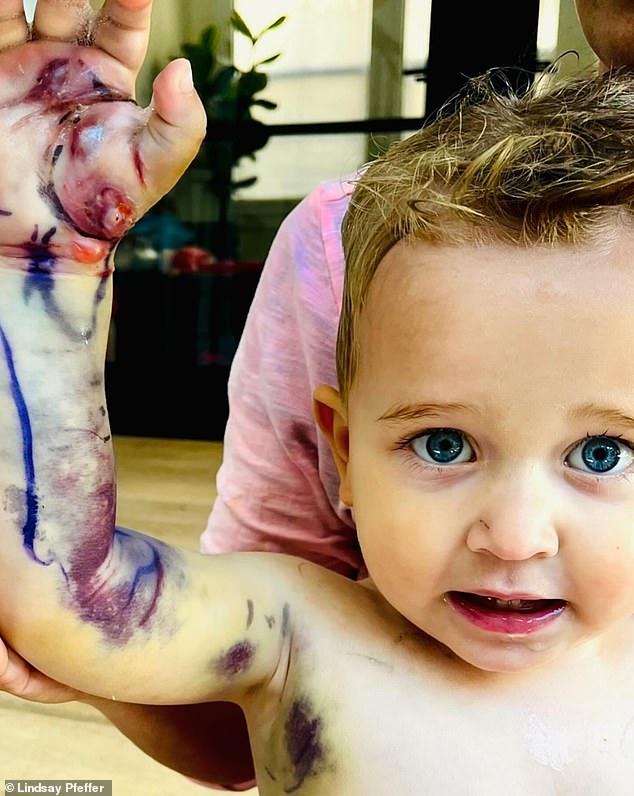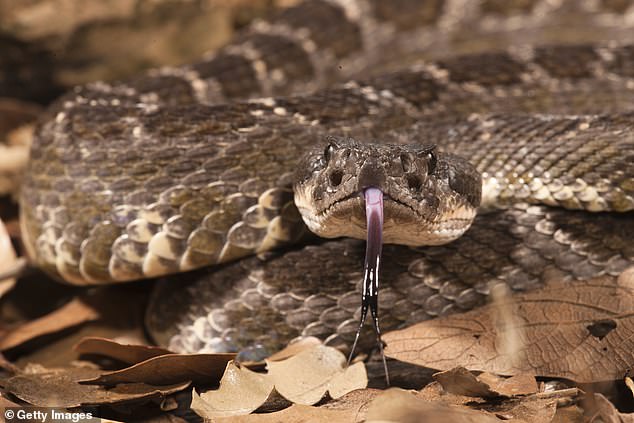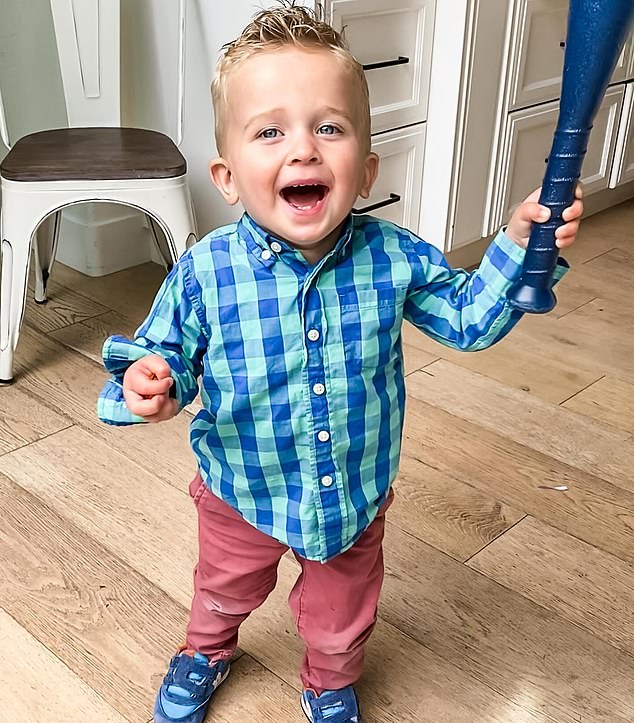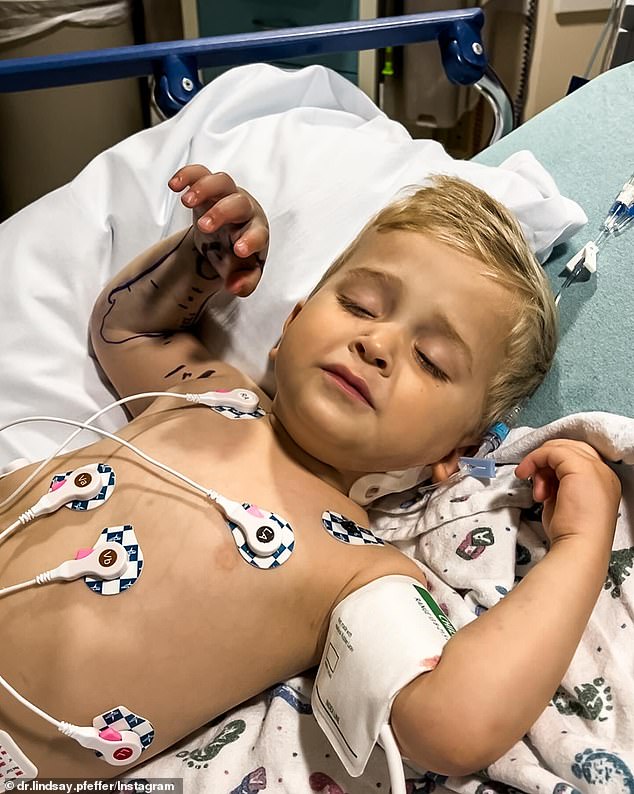Brigland ‘Brigs’ Pfeffer had just turned two years old when his parents were faced with the very real possibility that he would die.
The boy was playing in the backyard of his home in San Diego, California, when he ran to his mother yelling that he had been bitten by a snake.
His mother, Lindsay Pfeffer, said she could only see the “small drop” of blood on his right hand, between his index finger and thumb.
But the reality was that a deadly dose of poison was rapidly circulating through his small body, and the antidote to save his life would cost almost $300,000.
The family was going to go to the nearest emergency center, but a 911 operator told them to wait for an ambulance because the emergency centers did not have antidote.
Mrs. Pfeffer, said Local CBS8: ‘He was lying on the sidewalk in front of (the house) completely flat; He was just sweating and not moving.
The ambulance took the boy to Palomar Escondido Medical Center, 25 minutes away, the closest facility with antidote, marking where the poison was traveling up his arm.
But when they got to the hospital, doctors couldn’t start an IV to administer the antivenom because snake venom constricts the veins and makes access difficult, so doctors had to pierce Brigs’ leg to administer the antivenom.
BRAVE BRIGS: Brigland Pfeffer. Doctors hooked Brigs up to monitors and placed shock pads on his chest in case his heart stopped beating.
Mrs Pfeffer said: ‘I thought I was going to die; We all thought he was going to die and even the doctors thought he was going to die.
‘When they started putting the electric shock pads on him and I saw his blood pressure drop… we knew he wasn’t well.
“His whole arm was black and I said, ‘I don’t want his last memory to be me screaming.'”
Once stabilized, Brigs was taken to Rady Children’s Hospital, where he remained in the intensive care unit for several days, but doctors were still unsure if he would survive.
His mother added: “No one understands how he is alive.”
The antidote is most effective when administered within 24 hours, but experts emphasize that immediate care is vital.
It often takes more than a dozen vials of antivenin to treat a snakebite, and it typically costs thousands per vial.
The average amount per patient is 18 vials, said Dr. Michelle Ruha, an emergency physician in Arizona and former president of the American College of Medical Toxicology. said The Washington Post.
Brigs needed more than 30 vials to treat his South Pacific rattlesnake bite, and after several days of treatment, the boy was sent home to continue his recovery.

FAMILY SHOCK: Brigs spent several days in the intensive care unit before recovering enough to return home to his family (pictured)
While the poison is no longer a threat and the swelling in his hand and arm has gone down, Brigs’ mother says he has become left-handed because nerve damage and scar tissue have left him unable to use his former dominant right hand.
Rattlesnake bites are relatively rare: About 8,000 people are bitten by any type of venomous snake each year, but CBS8 reported Rattlesnake sightings are increasing throughout San Diego County, according to county data.
The area has received 99 calls related to snake sightings between May 2019 and May 2024.
The bites cause severe pain and swelling where it occurred and can cause excessive bleeding, as well as nausea and swelling in the throat, making it difficult to breathe.

The snake’s venom caused swelling and bruising on Brigs’ arm from his right fingers to his armpit.

Two-year-old boy bitten by South Pacific rattlesnake (pictured)
The venom from snake fangs damages tissues and affects the circulatory system by destroying skin and blood cells, causing internal bleeding.
Mortality rates vary, but death is quite rare, ranging from three percent without antidote to 0.3 percent with treatment.
However, a bite can lead to serious and long-lasting complications, such as tissue loss, deformity, or loss of bodily function, depending on where the bite is located.
Even though Brigs was out of danger, the Pfeffers’ ordeal was not over. Shortly after returning home, his family received a bill for $297,461, with the antidote accounting for $213,278.
The Post reported that Brigs received the Anavip antidote at two different hospitals that charged two different prices.
Palomar, where emergency personnel treated the child, charged $9,574 per vial, for a total of $95,746 for the initial dose of 10 vials of Anavip.

Brigs’ mother says he has become left-handed because nerve damage and scar tissue have left him unable to use his right hand.
Then Rady’s, the largest children’s hospital on the West Coast, charged $5,876 for each vial of the 20 Brigs received there, for a total of $117,532.
Most insurances do not cover antidotes or reimburse them at a rate much lower than what hospitals charge patients.
Brigs’ insurance company was eventually able to negotiate a reduction in the price of the antidote by tens of thousands of dollars, and the family ultimately paid $7,200.
However, insurance did not cover one of Brigs’ two ambulance transports, which was billed an additional $11,300.

